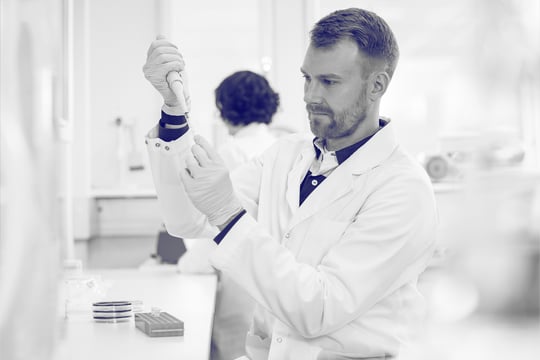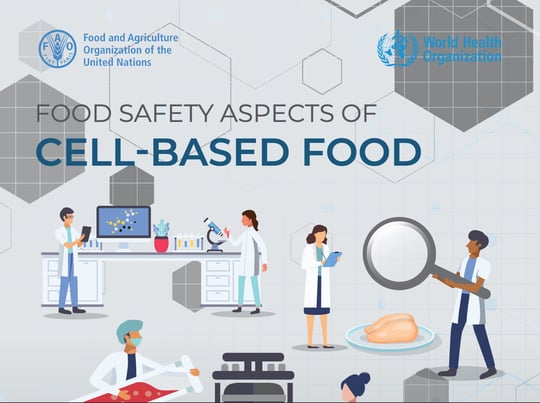
Precision fermentation has opened a vast trove of new food products
Fermented foods made with traditional fermenting involve microorganisms that make yoghurt thicken, bread rise or beer foam. More broadly speaking fermentation is a metabolic process in which a microorganism produces different organic molecules that change the characteristics of food, or that can be isolated and utilised in food. Industrial fermentation was born from the realisation that microorganisms may be used to produce various valuable molecules, such as amino acids, enzymes, organic acids, vitamins, or antibiotics.
Modern biotechnology has made precision fermentation possible. It is a form of synthetic biology, where microorganisms are programmed to produce high yields of complex organic molecules from various raw materials. It has only recently been tapped to produce foods. Industry-level precision fermentation takes place in a contained environment, typically requiring the use of genetically engineered microorganisms, which are cultivated in brewery-style fermentation tanks.
When do precision fermentation foods fall under EU GMO regulation?
When modern biotechnological tools like gene technology are used to modify the genome of a microorganism, the resulting organism is called a genetically modified organism (GMO). In the European Union, GMOs are strictly regulated, and risk assessment is required for all GMOs. Regulation (EC) 1829/2003 applies to genetically modified food and feed, while Directives 2009/41/EC and 2001/18/EC apply to the contained use of microorganisms, and deliberate release of GMOs into the environment, respectively. Deliberate release means a situation where living genetically modified microorganisms are consciously released into the environment, for example in the form of food, feed or plant protection products.
For fermentation products, the presence of recombinant DNA has been interpreted as a marker of GMO material in the products. Recombinant DNA molecules are genetically recombined DNA molecules, which bring together genetic material from multiple sources, creating sequences that would not otherwise be found in the genome.
There is scientific debate on whether it makes a difference, however. A recent paper has challenged the view and extensively discusses how recombinant DNA in fermentation products is of no regulatory relevance. On the other end, Belgian research organisation Sciensano has developed ultrasensitive methods to detect DNA from genetically modified microorganisms in food enzyme products in the EU market. As a result, some food enzymes have been judged unauthorized due to detected recombinant DNA and withdrawn from the market.
Wrong DNA sequences, false positives, and inconclusive results
Biosafe is often asked by our customers what DNA sequence should be targeted if they wish to analyse the presence of DNA in fermentation products. Because the risk related to recombinant DNA in food is usually linked to antimicrobial resistance (AMR) genes used as selectable markers, we are often asked if the AMR gene should be targeted. Sciensano uses methods which target AMR genes. This approach has a serious drawback.
Products like enzyme preparations are not sterile, so they may contain contaminants. Contaminants, in turn, may carry the same AMR genes used as markers or AMR genes may be naturally present in the production strains as intrinsic genes. Because AMR genes are commonly found in everyday bacteria, detecting them will not provide a definitive answer whether they are from production strains or contaminant strains. The risk of false positive findings due to contaminants is real. Inconclusive results are a real problem for the industry. To get rid of them EFSA has outlined in its guidance documents a production strain-specific sequence should be targeted. This minimises the risk of detecting something other than the production strain. Our advice is to follow EFSA's guidance documents during the registration process.
Search hard enough and you will find any DNA
Another question often posed to us is whether to use quantitative PCR or traditional PCR, or even digital PCR. The EFSA guidance documents for feed additives or food enzymes do not specify the method to a further extent than “PCR”.
Technically speaking, all PCR options are acceptable. However, the potential risk of production strain DNA is linked to complete AMR genes rather than parts of them. So, the shorter the targeted DNA fragment is, the more likely you are to find non-functioning DNA fragments of no concern.
In addition, the wide dynamic range and sensitivity of quantitative or digital PCR enable the detection of very low amounts of DNA, well below the EFSA threshold of 10 ng/g product. Such a sensitive method can lead to detecting DNA amounts that are technically unavoidable. In practice, we have noticed that lowering the detection threshold below the already minuscule 10 ng/g with extremely sensitive methods creates challenges with many products as you will inevitably find trace amounts of DNA that have no other significance except that they must be reported. So, before adopting the most modern and state-of-the-art method, consider using a method most appropriate for the purpose – often good old PCR.
Do you need to analyse the DNA in your product? Contact our experts for more information.
 Meeri Sutinen +35840 574 9191 meeri.sutinen@biosafe.fi |
 Lars Granlund +358 40 5061 244 lars.granlund@biosafe.fi |
Topic:








